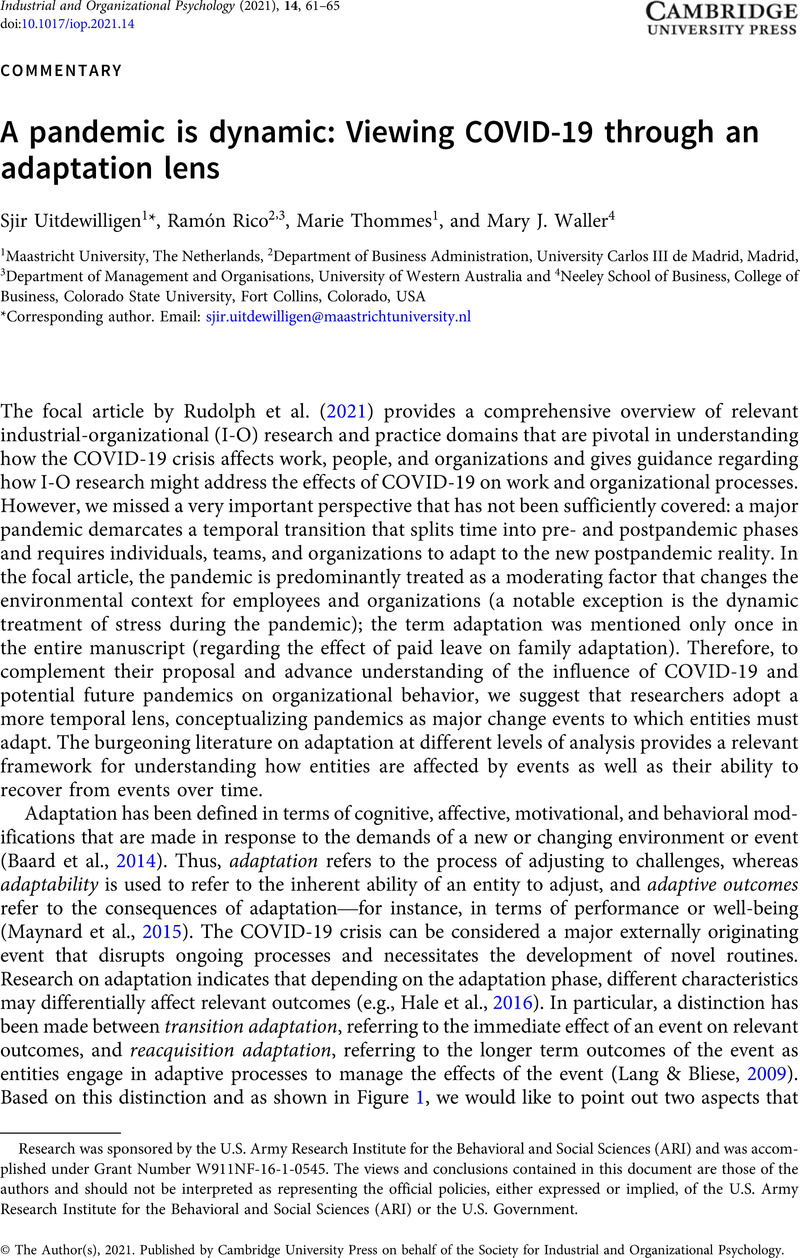Crossref Citations
This article has been cited by the following publications. This list is generated based on data provided by Crossref.
Rico, Ramón
Uitdewilligen, Sjir G.
and
Dorta, Daniel
2022.
Patterns of team adaptation: The effects of behavioural interaction patterns on team adaptation and the antecedent effect of empowering versus directive leadership.
Journal of Contingencies and Crisis Management,
Vol. 30,
Issue. 4,
p.
365.
Dolbier, Christyn L.
Vanacore, Sarah M.
Conder, Lauren
and
Guiler, William
2023.
A mixed-methods investigation of COVID-19 pandemic-specific stress in college students.
Journal of American College Health,
p.
1.
Elman, Alyssa
Gottesman, Elaine
Makaroun, Lena K.
Chang, E-Shien
Baek, Daniel
Clark, Sunday
and
Rosen, Tony
2023.
Adult Protective Services Perspectives on Responding to Elder Abuse and Serving Clients During the COVID-19 Pandemic.
Journal of Applied Gerontology,
Vol. 42,
Issue. 7,
p.
1551.
Urbanavičiūtė, Ieva
Lazauskaitė‐Zabielskė, Jurgita
and
Žiedelis, Arūnas
2023.
Re‐drawing the line: Work‐home boundary management profiles and their dynamics during the pandemic.
Applied Psychology,
Vol. 72,
Issue. 4,
p.
1506.
Jundt, Dustin K.
and
Shoss, Mindy K.
2023.
A Process Perspective on Adaptive Performance: Research Insights and New Directions.
Group & Organization Management,
Vol. 48,
Issue. 2,
p.
405.
Pilotti, Maura A. E.
El Alaoui, Khadija
Abdelsalam, Hanadi M.
and
El-Moussa, Omar J.
2024.
Understanding STEM and non-STEM female freshmen in the Middle East: a post-pandemic case study.
Cogent Education,
Vol. 11,
Issue. 1,
Krause, Ryan
Withers, Michael C.
and
Waller, Mary J.
2024.
Leading the Board in a Crisis: Strategy and Performance Implications of Board Chair Directive Leadership.
Journal of Management,
Vol. 50,
Issue. 2,
p.
654.



